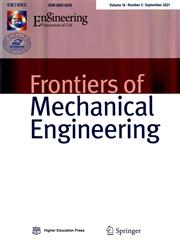将形态设计与拓扑优化相结合,提高电塔视觉质量
IF 4
2区 工程技术
Q1 ENGINEERING, MECHANICAL
引用次数: 1
摘要
目的:本文旨在通过系统的设计方法对基础设施的塔架、桅杆和塔架等人工地上结构进行形态和结构优化,提高其视觉质量。设计/方法论/方法:该方法基于计算机辅助工具的应用来实现功能和美学目标。特别是,这是根据三个关键步骤实现的:•景观相关象征、环境或文化和社会需求的形态发展。•设计理念的拓扑优化,以减少结构重量及其视觉影响。•由此优化的结构的工程设计。实际意义:作为一个案例研究,该方法用于设计地中海欧洲国家(如意大利)沿海地区的输电塔。公民参与了概念发展的象征性形状的识别阶段和最终评估阶段。研究局限性/影响:工程阶段是通过组装具有焊接连接的标准晶格构件来进行的。即使这种桁架式结构的使用应导致最低成本,开发的结构也使用了额外的15%-20%的桁架和金属板。最终成本高于标准桁架塔。调查结果:结果是,根据国际准则,结构的视觉质量得到了提高,并完全符合强制性和功能性要求,如监管和工业可行性,以及社会组成部分的要求。独创性/价值:该方法显示了其在定义轻型结构的定制设计方面的潜力,并针对此处讨论的关键情况提高了视觉质量。该方法既考虑了公民的主观感受和他们的优先事项,也考虑了结构安装的景观。本文章由计算机程序翻译,如有差异,请以英文原文为准。
The integration of morphological design and topology optimization to enhance the visual quality of electricity pylons
Purpose: This paper aims to enhance the visual quality of artificial above-ground structures, like pylons, masts, and towers of infrastructures and facilities, through a systematic design method for their morphological and structural optimization. Design/methodology/approach: The method achieves the functional and aesthetic goals based on the application of computer-aided tools. In particular, this is achieved according to three key steps: • Morphological development of landscape-related symbolism, environment, or culture and social needs. • Topology optimization of the design concept to reduce the structural weight and its visual impact. • Engineering of the resulting optimized structure. Practical implications: As a case study, the method is used for designing electricity pylons for the coastal territory of a Mediterranean European country, such as Italy. Citizens were involved during the identification phase of a symbolic shape for the concept development and during the final assessment phase. Research limitations/implications: The engineering phase has been performed by assembling standard lattice components with welded connections. Even if the use of this truss-like structure should lead to a minimum cost, the developed structure employs an additional 15%–20% of trusses and sheet metal covers the final cost is higher than a standard lattice pylon. Findings: The result is a structure with enhanced visual quality according to the international guidelines and fully complying with mandatory and functional requirements, such as regulatory and industrial feasibility, as well as those arising from social components. Originality/value: The method shows its potential in defining a custom design for lightweight structures with enhanced visual quality regarding the critical situation discussed here. The method considers both the subjective perception of citizens and their priorities and the landscape where the structures will be installed.
求助全文
通过发布文献求助,成功后即可免费获取论文全文。
去求助
来源期刊

Frontiers of Mechanical Engineering
Engineering-Mechanical Engineering
CiteScore
7.20
自引率
6.70%
发文量
731
期刊介绍:
Frontiers of Mechanical Engineering is an international peer-reviewed academic journal sponsored by the Ministry of Education of China. The journal seeks to provide a forum for a broad blend of high-quality academic papers in order to promote rapid communication and exchange between researchers, scientists, and engineers in the field of mechanical engineering. The journal publishes original research articles, review articles and feature articles.
 求助内容:
求助内容: 应助结果提醒方式:
应助结果提醒方式:


